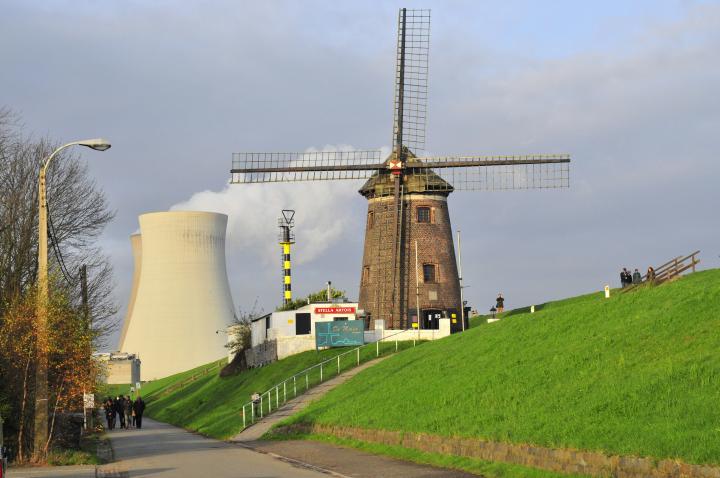
British Prime Minister Keir Starmer announced a multibillion-dollar deal last week with the US for the construction of a series of Small Modular Reactors (SMRs). Although the so-called “nuclear renaissance” is also taking shape in Europe according to investors, they see American companies as the main beneficiaries.
During Trump’s visit last week to the United Kingdom, the British signed a deal worth 10 billion pounds for the construction of twelve SMRs in the port city of Hartlepool. The project is expected to supply power to one and a half million households. Britain views nuclear energy as the key path to restoring energy security.
Support for nuclear power is also rising across Europe, as countries seek independence from Russia for their energy supply. According to the European Commission, 241 billion euro will be needed by 2050 to build nuclear infrastructure. “Energy security, independence, and sustainability are the main drivers behind nuclear energy investments in Europe,” said Senior Investment Analyst Natalia Luna of Columbia Threadneedle in an interview with Investment Officer.
The main builders of SMRs are American, such as NuScale, Westinghouse, and X-Energy. These firms are profiting from the shift in sentiment in Europe. X-Energy will build twelve SMRs in the UK. American producer GE Vernova has won a Swedish tender, while reactor developer NuScale is preparing a project in Romania.
“There is a flood of loans becoming available for building networks, which makes the investment theme something of a self-fulfilling prophecy,” said Asset Manager Renco Van Schie of Valuedge. “Nuclear power is now included in the EU taxonomy for sustainable investments, which makes it more attractive for a broader set of investors.”
US’s more commercial approach
That American companies are leading over European peers is due to the strong energy demand from the data centers of tech giants, said Luna. “The US also feels the urgency to maintain technological dominance as a source of geopolitical power.”
Pier Stapersma of the Centre for International Energy Policy (CIEP) explained the US advantage as the result of a more commercial approach. “They are also more willing to take risks. In addition, more venture capital is available to stimulate innovation.”
Because of the complexity of nuclear energy, projects are hard to make economically viable, according to the institute’s director. “While traditional nuclear plants are always unique and tied to a location, the Americans are opting for factory-style deployment of SMRs. This allows them to gain economies of scale and largely automate the production process.”
While the US has not stood still in recent years, Europe has virtually lost its technical knowledge of nuclear energy after nearly four decades of divestment. “On top of that, Europe has a lot of outdated infrastructure that needs renewal,” said Van Schie. Last year he entered the theme through a position in the VanEck Uranium and Nuclear Technologies ETF, driven by the AI-related energy demand from data centers.
The ETF in Valuedge’s portfolio rose by almost 84 percent in a single year. SMR builder NuScale, with a weighting of almost 6 percent in the ETF’s index, saw its share price quadruple over the same period.
France is too late
France did continue investing in nuclear energy over the past decades and would gladly take a leading role in the European revival, said Stapersma of CIEP. In France, state-owned companies sustain the nuclear ecosystem, with the state firm EDF playing a central role in managing and operating reactors.
EDF launched its own SMR project, Nuward, in 2019. In January this year the company announced delays in development, pushing the introduction back beyond 2030. That risks leaving EDF behind competitors who are already further along with permits and construction plans.
Britain’s Rolls-Royce is the only notable European exception, with projects in Sweden for Vattenfall and in the Czech Republic for ČEZ. But this firm too must compete with the American giants already at the contracting stage of other tenders.
From Russian dependence to American dependence
The question arises whether dependence on American nuclear technology is a better alternative for Europe than dependence on Russian energy. Van Schie expressed his doubts.
A potential solution could lie in a pan-European approach to nuclear energy, investors suggested. But that does not appear likely, since European member states are signing bilateral agreements with the US. Countries closer to Russia, such as Poland and Romania, feel a more acute threat, leading to more concrete plans to build nuclear energy capacity, said Luna of Columbia Threadneedle.
In April this year, Poland signed the Engineering Development Agreement (EDA) with the American consortium Westinghouse and Bechtel for the construction of the first AP-1000 nuclear plant, part of an energy security deal worth tens of billions of dollars.
According to Stapersma, Eastern European countries are trying to score points with the Americans for protection against the Russian threat. “Countries like Poland owe a lot to the US for their security. Nuclear deals are a way to deepen diplomatic ties.”